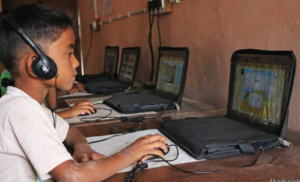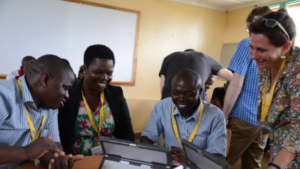
Technology and Developing Country Future of Education
In a time when technology is developing at an unheard-of speed, its impact on many industries including education is significant. In underdeveloped nations, where technology can spur transforming change, this effect is especially important. Examining present trends, issues, and possible solutions to close the educational gap, this paper explores how technology is influencing the future of education in developing nations.
The Situation of Education in Developing Countries Now
Developing nations’ educational institutions can have several difficulties: few resources, poor facilities and a dearth of trained teachers. More than 258 million children and young people worldwide, according to UNESCO, are out of school; most of them live in poor nations. There are clear educational gaps in several areas, which calls for creative answers.
Infrastructure and Restrictions on Resources
Insufficient appropriate educational infrastructure is one of the most urgent problems facing developing nations. Many of the schools run in settings with inadequate classrooms, antiquated supplies, and erratic power availability. Furthermore aggravating the learning difference is the lack of instructional aids including digital tools and textbooks.
Teacher Deficit and Instruction
Crucially affecting educational results are teacher quality and availability. Many underdeveloped nations lack trained teachers in rather large numbers. Moreover, many times lacking access to continuous professional development, which is necessary to maintain current with contemporary teaching approaches and technologies is present among current teachers.
The Changing Nature of Technology Technology provides answers for many of the problems educational systems in developing nations face. Using digital tools and creative ideas helps one improve the quality of education and increase access to learning chances.
Digital Learning Platforms and Classrooms
E-learning systems and digital classrooms have transformed the manner that knowledge is imparted. Online learning systems offer a great substitute in developing nations when physical infrastructure could be insufficient. Accessible from anywhere with an internet connection, platforms including Khan Academy, Coursera and edX provide free or low-cost instructional materials.
E-Learning’s advantages include:
Students may easily obtain excellent instructional materials from far-off locations.
Learners may study on their own timetable and at their own speed.
Reduces the need on infrastructure and physical resources, therefore promoting cost-effectiveness.
Mobile Devices and Learning Apps
Even in underdeveloped nations, mobile technology is becoming even more common. A larger portion of people can now afford tablets and smartphones. Interactive and interesting learning opportunities might come from educational apps meant for mobile devices. applications like Duolingo, for instance, help students pick up new languages; applications like Photomath aid with mathematical problem-solving.
Benefits of Mobile Learning include:
Portability: There is always reach for learning resources.
Interactive apps might make learning more effective and interesting.
Inclusiveness: Mobile apps can meet many demands and learning methods.
Online resources and open educational resources, or OER, are publicly available, openly licensed content meant for use in research, instruction, and learning. Freely available textbooks, lecture notes, and multimedia resources abound on websites such as OpenStax and MIT OpenCourseWare. These tools can help to alleviate the deplete of educational resources in underdeveloped nations.
Concerning OER:
Affordability: Lessens the cost of instructional resources.
Quality: offers access to excellent materials from respected universities.
Customizing tools enables teachers to fit local requirements.
Difficulties Including Technology Into Education
Although technology could revolutionize learning, including it into current systems comes with several difficulties. Realizing the whole value of technical developments depends on addressing these obstacles.
Digital divide and connectivity problems
The digital gap is one of main challenges to technology integration. Many poor nations have either limited or erratic internet connection. Significant connectivity problems in rural and isolated places can compromise the efficacy of digital resources and online learning environments.

Solutions for Problems with Connectivity:
Investing in internet infrastructure will help to increase connection.
Creating offline copies of tools and apps for teaching is one way forward.
Establishing community centers with internet connection is known as community access points.
Support and Instruction for Teachers
Good technology integration calls for teachers to be suitably qualified and supported. Many underdeveloped nations could have teachers lacking the required knowledge or ability to properly apply digital tools. Adoptable technology depends on professional growth and continuous support.
Plans for Teacher Support:
Providing seminars and training courses on technology application.
Peer Learning: Promoting among teachers cooperation and knowledge exchange.
Giving technical support and tools for troubleshooting helps.
Cultural and linguistic barriers
Technology integration may also be hampered by cultural and language variances. Effective educational materials and platforms must be culturally appropriate and available in local languages. Success of technology depends on its inclusive nature and respect of many cultural settings.
Overcoming Cultural and Linguistic Obstacles:
Localizing instructional materials to mirror regional languages and customs.
Community Involvement: Including nearby areas in the advancement and use of technology.
Offering resources in several languages will help to satisfy different populations.
Case studies are Technology- Driven Education’s Success Stories
Several emerging nations show the promise for good change by effectively implementing technology into their educational institutions.
Kenya: Programme on Digital Literacy
The Digital Literacy Program of Kenya seeks to improve the learning results by including technology into elementary education. While teachers are taught how to use technology into their lessons, the program gives pupils iPads and digital materials. Early data reveal better learning results and student involvement.
India: the “Digital India” Project
India’s “Digital India” program centers on using technology to increase access to other services including education. The effort covers the creation of mobile apps, online learning environments, and digital infrastructure. The “e-Pathshala” program, which provides digital textbooks and tools to students all throughout the nation, is one particularly noteworthy success.
Bangladesh: Brace Education Program
Bangladesh’s BRAC Education Program makes use of technology to assist initiatives in literacy and informal education. By means of mobile learning and digital materials, BRAC has been able to reach underprivileged areas and offer high-quality educational possibilities.
Future Development in Educational Technology
New tendencies likely to surface as technology develops will help to define the course of education in underdeveloped nations. Maximizing the effect of technology improvements depends on keeping current with these changes.
Artificial Intelligence and adaptive learning
Education is about to benefit much from artificial intelligence (AI). By customizing to fit certain students’ requirements and learning styles, AI-powered solutions can provide individualized learning opportunities. This customisation might enhance learning results and assist to meet various demands.
VR and ARVirtual Reality and Augmented Reality
Immersion learning opportunities presented by virtual reality (VR) and augmented reality (AR) can improve understanding and involvement. Virtual reality and augmented reality allow one to build interactive simulations, virtual field trips, and other learning opportunities not feasible in conventional classroom environments.
Blockchain: Applied in Education
Blockchain technology could completely change how management of educational qualifications is handled and validated. Blockchain can simplify credential verification and lower fraud by offering a safe and open approach to save and distribute academic records.
In summary,
By tackling current issues and creating new learning paths, technology could transform education in underdeveloped nations. Effective integration, then, calls for overcoming challenges including digital divisions, cultural hurdles, and connectivity problems. Investing in infrastructure, teacher development, inclusive and flexible solutions development would help to leverage technology to provide an educational environment more fair and efficient.
With technology driving great change, the future of education in emerging nations is bright. We must keep aware of the particular needs and situations of these areas while we keep discovering and using creative ideas. Technology can significantly help to shape a better future for education globally by means of coordinated effort and cooperation.
This paper offers a thorough summary of how technology is shaping developing nation education going forward. By tackling the possibilities as well as the difficulties, it emphasizes the transforming power of digital tools and advances in conquering educational inequalities.
1 thought on “Technology and the Future of Education in Developing Countries”